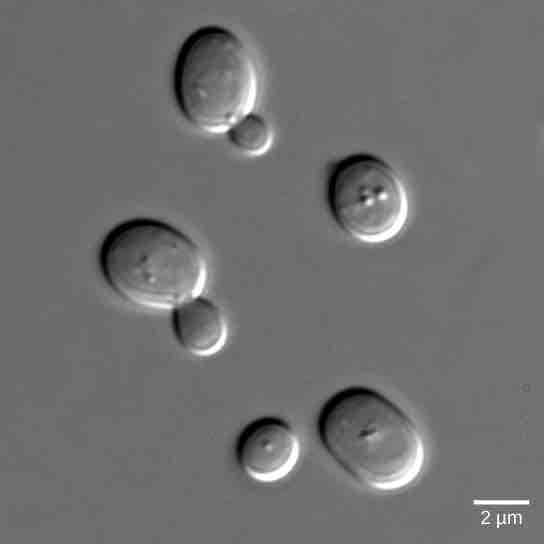Signaling in Yeast
Yeasts are single-celled eukaryotes; therefore, they have a nucleus and organelles characteristic of more complex life forms. Comparisons of the genomes of yeasts, nematode worms, fruit flies, and humans illustrate the evolution of increasingly-complex signaling systems that allow for the efficient inner workings that keep humans and other complex life forms functioning correctly.
The components and processes found in yeast signals are similar to those of cell-surface receptor signals in multicellular organisms. Budding yeasts are able to participate in a process that is similar to sexual reproduction that entails two haploid cells combining to form a diploid cell . In order to find another haploid yeast cell that is prepared to mate, budding yeasts secrete a signaling molecule called mating factor. When mating factor binds to cell-surface receptors in other yeast cells that are nearby, they stop their normal growth cycles and initiate a cell signaling cascade that includes protein kinases and GTP-binding proteins that are similar to G-proteins.

Budding Yeasts
Budding Saccharomyces cerevisiae yeast cells can communicate by releasing a signaling molecule called mating factor. In this micrograph, they are visualized using differential interference contrast microscopy, a light microscopy technique that enhances the contrast of the sample.
Cellular Communication in Yeasts
Kinases are a major component of cellular communication. Studies of these enzymes illustrate the evolutionary connectivity of different species. Yeasts have 130 types of kinases. More complex organisms such as nematode worms and fruit flies have 454 and 239 kinases, respectively. Of the 130 kinase types in yeast, 97 belong to the 55 subfamilies of kinases that are found in other eukaryotic organisms. The only obvious deficiency seen in yeasts is the complete absence of tyrosine kinases. It is hypothesized that phosphorylation of tyrosine residues is needed to control the more sophisticated functions of development, differentiation, and cellular communication used in multicellular organisms.
Because yeasts contain many of the same classes of signaling proteins as humans, these organisms are ideal for studying signaling cascades. Yeasts multiply quickly and are much simpler organisms than humans or other multicellular animals. Therefore, the signaling cascades are also simpler and easier to study, although they contain similar counterparts to human signaling